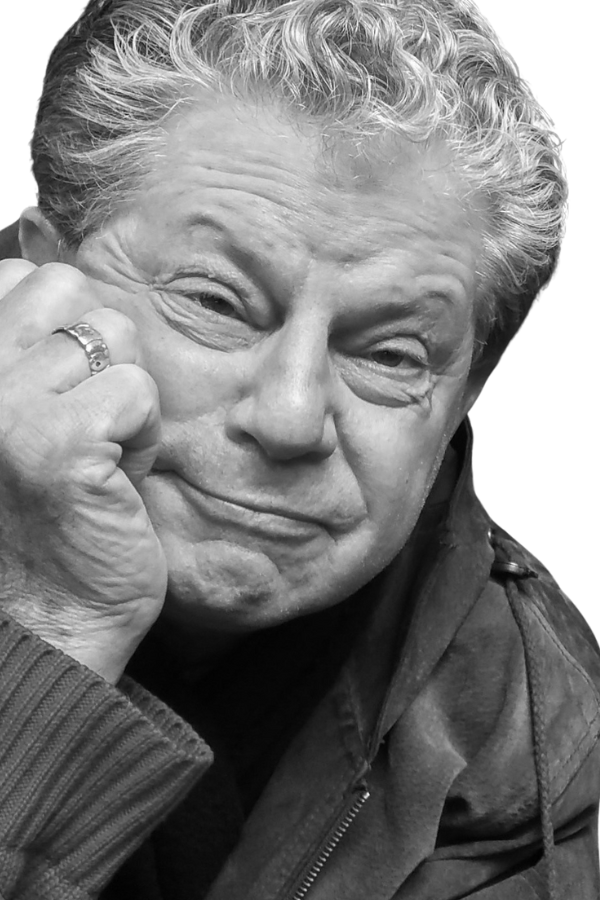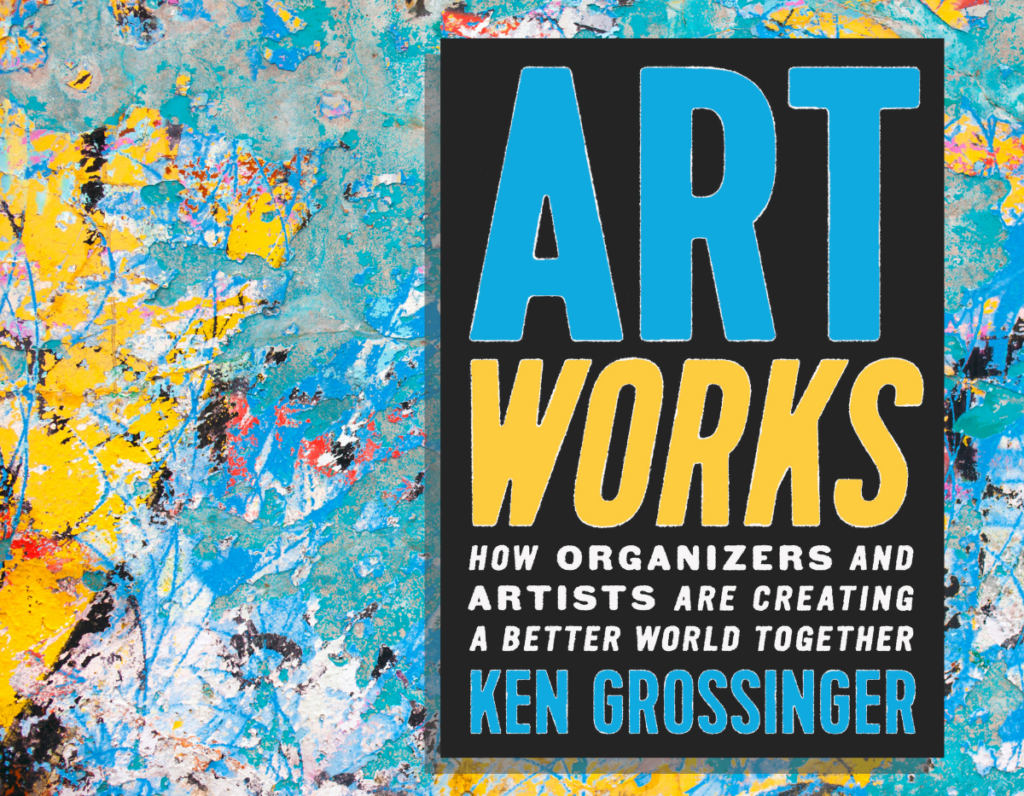Under the bright-as-day arc lights of the old Cleveland Cloth Plant, the swing shift is walking out, lighting up, heading home, the card room workers covered with cotton dust from Red Wing work boots to Durham Bulls baseball cap. The shift known variously in the South as midnight, cat eye, third, hoot owl, graveyard, night shift, is lined up single file just outside the double doors that lead to the mill, the line moving swiftly forward as they enter and punch in.
Outside the doors that lead to the time clock, a dozen workers, Black and white, are moving in a slow circle, their picket signs beginning to slump just a little as the long night stretches on. Seeing someone they know, they call out: “Hope you have a good night of it.” “How’s that new granddaughter doing?” “See you in church come Sunday!”
I stand just outside the circling workers, guitar strapped to my shoulder. Mostly I sing the old songs that so many Black and white Southerners know by heart: “I Saw the Light,” “I’ll Fly Away,” “This Little Light of Mine,” “Amazing Grace” (if you want to know the words to any standard Christian gospel song, ask a small-town Jew like me—we know a whole of them, a form of protective coloration). We’re not trying to do a hard sell, not telling people that tonight’s the night they really need to join the union, just quietly reminding them that there’s an organizing drive going on, that the organizing committee members following each other around that midnight circle are their friends, neighbors, coworkers, kin.
It’s 1978. We’re in Shelby, in Cleveland County, North Carolina, famous (if you’re in the right circles) as the birthplace of legendary bluegrass banjo virtuoso Earl Scruggs, who as a teenager also worked in one of the local cotton mills, who later in life marched with his sons against the Vietnam war. I’m 34 years old, an area director for the textile workers union, part of our campaign to unionize the more than 80 mills owned by J.P. Stevens, at the time the second-largest textile corporation in the United States.
A few days later, I’m called into my supervisor’s office, and threatened with disciplinary action. “It isn’t appropriate,” I’m told in no uncertain terms, “for a leader of our union to be playing guitar on one of our informational picket lines. Next time, leave it home”—and then the unspoken but clearly understood, “Or else.”
How times have changed.
Or have they?
Rooting the present in the past
One of Ken Grossinger’s major achievements in his groundbreaking new book Art Works: How Organizers and Artists Are Creating a Better World Together (The New Press, 2023) is the historical balancing act he pulls off, rooting the present in the past.
Grossinger—himself a long-time legendary labor leader and movement strategist— passionately, effectively argues that something new is indeed happening these days, that artists and organizers across a wide range of social justice issues and artistic genres are working together in remarkable ways, creating momentum, movement, power; winning victories at a level that often neither organizers nor artists alone can quite achieve.
“When artists and organizers combine forces, new forms of political mobilization follow—which shape lasting social change,” he writes. “And yet few people appreciate how much deliberate strategy often propels this vital social change work. Behind the scenes, artists, organizers, political activists, and philanthropists have worked together to hone powerful strategies for achieving the world we want and the world we need.”
As Grossinger eloquently documents, it’s not as simple as inviting a songwriter to perform at a demonstration, or asking an organizer to speak to progressive students at an art school. It’s the contemporary equivalent of feminist Charlotte Bunch’s 1987 observation that, in order to write truthful history, “You can’t just add women and stir.”
Art Works reminds us of something we either never knew, or long ago forgot: that the roots of this particular synthesis of art and organizing, this strategic, cooperative way for artists and organizers to think and work together as they strive to change the world for the better, have been developing and fine-tuning themselves for a very long time, that they run deeper even than memory, than history, than imagination. He never lets his enthusiasm for the current flowering of politically conscious artists and hard-hitting social justice organizers working together that inspired Art Works undermine his knowledge of and deep respect for the past.
Now it may or may not be true, as some sports fans will tell you, that “You can’t tell the players without a program.” Regardless, the list of “players” Grossinger interviewed for Art Works underpins and helps legitimate his core argument. Who wouldn’t want to have any combination of Ai Weiwei, Courtland Cox, Jackson Browne, Shepard Fairey, Jane Fonda, Elizabeth Alexander, Bill McKibben, Jr., or Jose Antonio Vargas, whose work in coordination with organizers and organizing campaigns Grossinger describes in Art Works, at their side as they metaphorically storm the barricades of injustice?
But if these names or at least some of them, ring a freedom bell with today’s justice-seeking artists and organizers, how many remember, honor, recognize the debt we all owe to Luis Valdez, John O’Neal, the SNCC Freedom Singers, the creators of the musical Pins and Needles, all artists whose creative work was embedded in social justice organizations and campaigns? How many organizers and artists working in 2024 even know these names, can draw important lessons about strategies and tactics from their Movement sisters and brothers of almost 60 years ago?
Using the past to enrich the present
A major strength of Grossinger’s book is that he not only shows the ways in which the present is rooted in the past. He brings the stories and lessons of the past forward to our own time, so we can learn from them and enrich our own work.
How many artists and activists today, for example, know about the show Pins and Needles, which opened in 1937 and ran for over 1,100 performances, the most for any Broadway musical at that time?
The artists who created the musical from the ground up, Grossinger teaches us, were not musical theater professionals, but everyday garment-factory workers, who were also rank-and-file members of the International Ladies’ Garment Workers Union, the ILGWU.
John O’Neal was a field secretary for the Student Nonviolent Coordinating Committee (SNCC), the militant young people’s wing of the Southern Civil Rights Movement, when he cofounded the Free Southern Theater, which performed in Freedom Centers and churches, at HBCU’s and outdoors.
The SNCC Freedom Singers were founded by another SNCC field secretary, Cordell Reagon., who was working in Albany, Georgia. Both the Freedom Singers and the Free Southern Theater worked hand in hand with rest of SNCC, the artists lifting up the organization and helping it achieve its goals, the organization providing issues and stories for the artists to sing about, and bringing together an audience for the artists.
Luis Valdez brought together farmworkers and students in 1965 to form El Teatro Campesino as part of his work with the United Farm Workers of America (UFW), the union formed when the National Farm Workers Association, led by Dolores Huerta and Cesar Chavez, joined forces with the Agricultural Workers Organizing Committee, led by Philip Vera Cruz, Larry Itliong and others. The theater troupe performed in migrant camps, doing short original one-act plays called actos that were based on the experiences of the farmworkers themselves. The plays educated the public, and lifted the spirits of striking farmworkers.
One of the most important insights Grossinger draws from these histories, and from his own long organizing career, is that to be most effective, it’s not enough for artists to create work for social justice organizers, campaigns, organizations, movements. They need to create work with them.
He describes and argues for a strategic scenario where artists and organizers work closely together in the movement for justice, whether that’s in one community, for one issue, or for a movement that transcends boundaries and borders. It’s not a case of both/and, certainly not one of either/or. He imagines organizers and artists sitting at the same table, brainstorming and strategizing together, listening carefully to and interrupting each other, talking thoughtfully and passionately.
In this scenario, arts institutions have organizers on their boards of directors, and vice versa. They are equal, mutually respectful partners in the unending struggle for a kinder, gentler, more just world. They are together at that intersection where art and organizing meet, standing at that crossroads, trying to flag a ride.
Ken Grossinger sees this happening in the future—and he sees it happening now
As in the title of white Georgia civil rights activist Lillian Smith’s 1982 book The Winner Names the Age, he has realized that something radically (in both senses of the word) new, but at the same time deeply rooted in the past, is happening, and has named it. He’s described it, and documented it, in clear, compelling prose. He’s advocated for it, preaching about it as he travels the country, talking with artists and organizers, at colleges and bookstores, with. unions and community organizations.
Because I’ve spent almost 60 years as both a civil rights, union, and community organizer, and as a songwriting, performing, and recording musician, Grossinger’s core argument resonates deeply with me, as I know it will resonate with many, many others. Art Works is a book every organizer, every artist who’s helping to build a new society, a new economy, a new vision of what a better world can look like should have in their toolbox. He’s given all of us organizers, all of us artists, a roadmap. There are many different roads we can choose to follow, but they all lead to one destination: Justice.
Art Works: How Organizers and Artists Are Creating a Better World Together, by Ken Grossinger. The New Press, 2023
Did you enjoy this article?
We're in the middle of our annual fund drive, and this year we're building our own internal infrastructure for subscriptions, meaning more of every dollar pledged goes to fulfilling our mission. Subscribe today to support our work and be a part of Convergence's next evolution.

